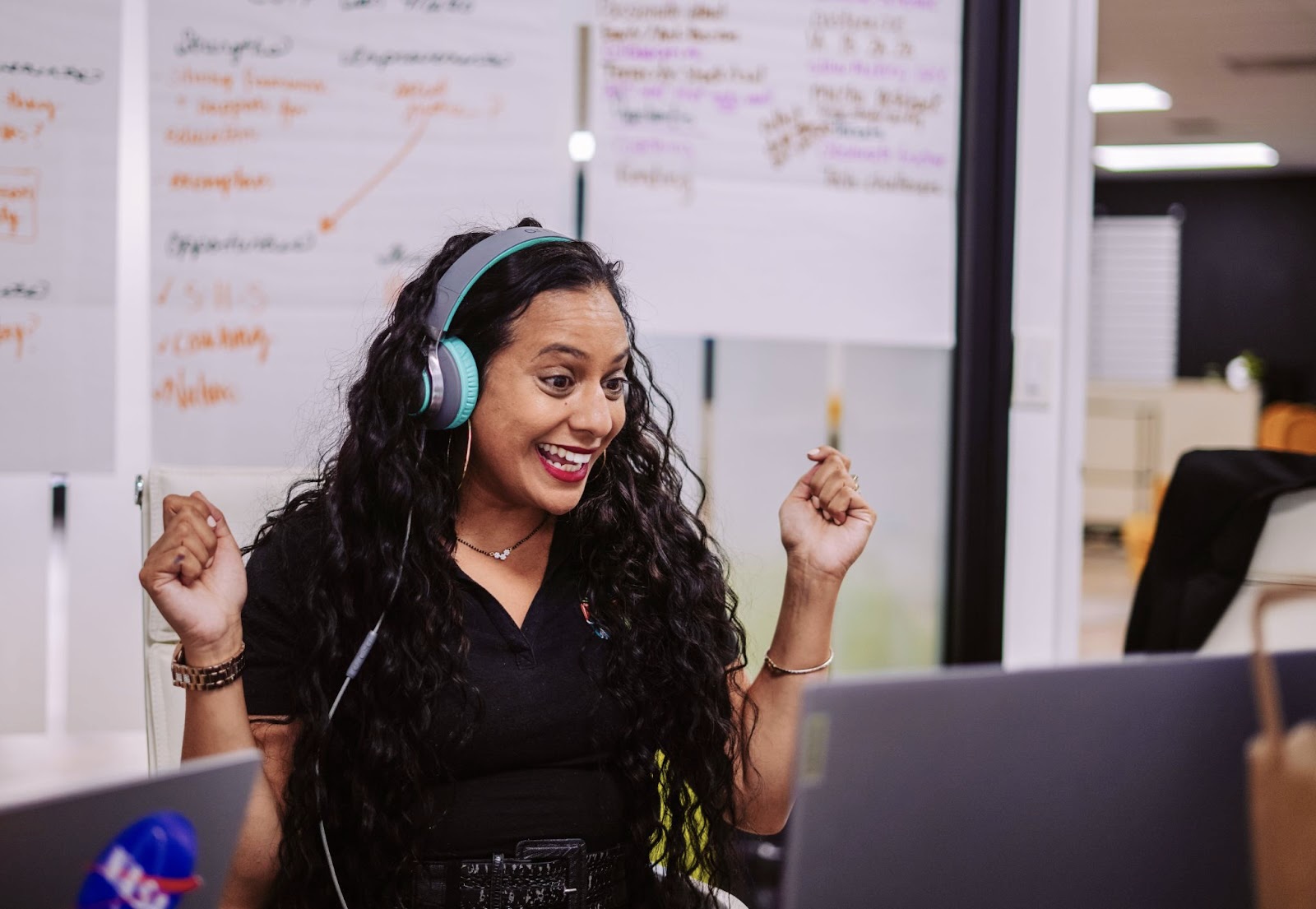Advancing AI Education for American Youth: Empowering Teachers and Students with STEM4Real
This April, the White House announced a groundbreaking executive order titled Advancing Artificial Intelligence Education for American Youth. The primary goal? To ensure that all students, regardless of background, have access to AI education. It’s an exciting development, but we must ask: Is AI really a threat to teachers, as some have suggested?
While some tech giants like Bill Gates have raised concerns that AI could replace teachers, we at STEM4Real disagree. Instead, we’re committed to demonstrating how AI can support—not replace—educators by humanizing student experiences and amplifying teacher-student connections.
Bill Gates, AI, and the Future of Teaching
It’s understandable why many are intimidated by AI. Some influential figures in the tech world suggest AI might replace classroom teachers by offering the same content students currently get from human instructors. But that’s not the vision of AI we’re passionate about at STEM4Real.
We believe that the essence of learning happens between students—and that AI should be a tool that supports this interaction, not a substitute for it. True learning flourishes when students:
- Ask questions and share ideas 🤔
- Respectfully disagree with one another 💬
- Build on each other’s thoughts 🧠
- Co-create knowledge and solutions 🤝
AI can be a powerful tool in helping students engage in these processes, but teachers are the heart of it all.
The Work We’re Doing with Richmond Public Schools
At STEM4Real, we’re putting this philosophy into practice with Richmond Public Schools, where we are showing how AI can be a true partner in the classroom. We’re not interested in AI that just puts students in front of a screen and has them click through tasks. Instead, we’re using tools like Curipod, Kialoedu, and Parlay Ideas to encourage environments where students interact with each other—not just a computer.
These tools are designed to create structured peer discussions that encourage critical thinking and collaborative problem-solving.
And we’re not stopping there. We’re excited to launch Mathimo, an AI-powered math tutoring platform that does more than help students solve equations—it also tackles math anxiety, offering personalized support to help students feel more confident in their learning. Plus, Mathimo aligns with NGSS Science and Engineering Practices, ensuring that students not only tackle math problems but also build critical skills in science and engineering. Keep reading!
How AI Can Elevate NGSS Science & Engineering Practices
At STEM4Real, we are committed to integrating AI with the Next Generation Science Standards (NGSS), which emphasize inquiry-based learning and scientific practices. So, how do AI tools like Mathimo fit into this framework?
1. Modeling and Simulating
AI can help students visualize and interact with complex scientific concepts, creating simulations that make these ideas easier to understand.
2. Engaging in Evidence-Based Arguments
Real-time feedback with chatbots and problem-solving tools help students engage in evidence-based discussions, similar to the way scientists conduct real-world investigations.
3. Designing Solutions and Building Explanations
AI tools can offer students multiple ways to approach challenges, encouraging them to solve problems creatively and collaboratively.
These tools enhance scientific inquiry, but the teacher remains the essential guide. AI doesn’t replace the teacher’s role in shaping the learning experience—it simply amplifies the possibilities.
Teachers Are Still the Heart of It All
Let’s be clear—AI has a lot of potential. But no technology can replace the unique qualities of human teachers. AI doesn’t read body language, understand emotions, or build the deep trust that educators cultivate with their students.
That’s why we at STEM4Real firmly believe AI should support teachers, not take their place. Teachers create the classroom culture, build relationships, and provide the mentorship students need to thrive. AI tools like Mathimo can assist with real-time feedback and offer additional support, but the teacher is still the one driving the learning process.
Meet Mathimo: A Game-Changer for Math Education
AI has the potential to transform both academic learning and students’ emotional growth. At STEM4Real, we are committed to using AI to support the human interactions that are central to education.
Introducing Mathimo, our AI-powered math tutor, which does more than just help students solve problems. It helps them:
- Express their emotions about math—whether that’s anxiety, excitement, or frustration.
- Reflect on their learning process with tools like sentence stems and social-emotional learning (SEL) check-ins.
- Receive personalized encouragement, tailored to their learning style.
Mathimo is more than just an academic tool. It’s a holistic approach that supports both cognitive and emotional growth. By blending AI with culturally responsive teaching, Mathimo addresses both math content and math anxiety, ensuring that students don’t just learn math—they gain the confidence to excel in it.
We’re especially excited about Mathimo’s potential to change how students approach math, helping them build a growth mindset and empowering them to say goodbye to the idea of being “bad at math.”
Ready to meet Mathimo? Check out more at www.stem4real.org/mathimo.
Time to Bring AI into Your PD Plan
As schools begin to explore AI’s potential in education, it’s essential to think about how we incorporate these tools into teaching practices. AI can enrich student learning, support teachers, and create opportunities for all students to succeed—but this requires intentional planning.
If your school or district is interested in AI-focused professional development, particularly in math and science, let’s talk. We can help you integrate tools like Mathimo into your curriculum while ensuring that equity, teacher autonomy, and student agency remain at the forefront.
Book a call with us at www.stem4real.org/partner to start the conversation.
Let’s Keep the Conversation Going
AI isn’t just a future trend—it’s here. With the right approach, AI can help us build a more equitable, inclusive, and dynamic learning environment for all. Share your thoughts with us, and let’s keep the conversation buzzing in the comments!

